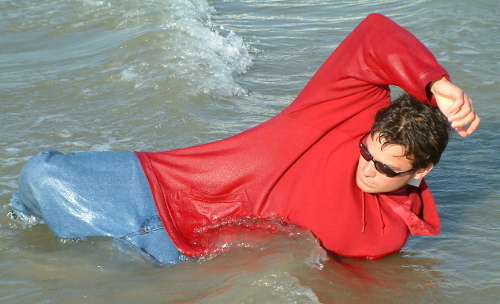Running in Sand and Water
Running on the beach varies a bit from cross country or mud running events. It's a good workout because the sand is soft and easy on the joints, like grass, but can be hard work at times in the wetter sand. Mostly the underfoot "give" is less than half an inch.
Running, like swimming, is another functional exercise for lifeguards, especially those who patrol open water and have to cover a land distance before reaching the water. Daily training sessions can incorporate swimming sprints and running sprints in a single lifeguard workout.
Why is it so Hard to Run on Sand?
The reason that running on sand is so hard is that every time you attempt to push off it, it gives way, requiring you to exert approximately 1.6 times the energy that would be required to maintain the same speed on solid ground.
For walkers, make that 2.1 ot 2.7 times for energy. Because the sand is so soft and moves with each step, the muscles have to generate a slightly greater force than running on a hard surface in order to move.
Comparative Study
In 1998 a comparative study of 60 men aged 15 to 21 in Turkey showed
that sand running produced a greater increase in calf circumference over road running
and a larger boost in maximum aerobic power (VO2max).
The calf size increases came from the muscle overload effect.
The VO2max jump resulted from the sand group's working harder to keep up with the road runners.
Low Impact
Beach running is much better in terms of impact on the joints and bones than running on tarmac and concrete. You will however run slower on sand than on grass or road, so don't base your road time on what you can do on the sand. When you do hit the road it will seem easy.
Run Close to the Water
When you run on sand you may find running close to the water gives you a firmer sand basis. It is also good practice for agility as you often have to dodge waves and thus detour from the straight line. If you misjudge a big wave you can get very wet as it pushes you over and you take a dip.
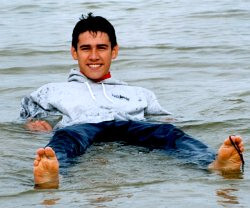 If you misjudge a big wave...
If you misjudge a big wave...
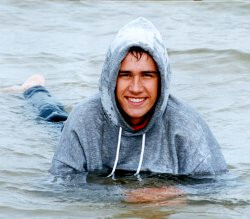 ...it pushes you over.
...it pushes you over.
Go Both Ways
Watch out for camber on the beach. Don't just run one way along the beach or you'll find the slight incline may impact your stride a bit. Ideally run one way and back the same track, to balance it out and avoid too much stress on one side.
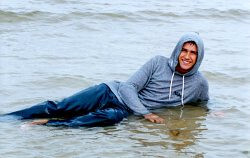 When you get too hot, enjoy a quick dip in the sea.
When you get too hot, enjoy a quick dip in the sea.
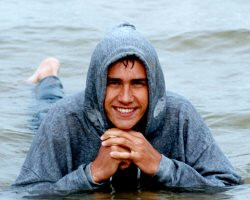
Increase the Training Level
A relaxed jog along the water's edge is easy. For a slightly greater challenge you can run in the water. Vary the depth to adjust the resistance. Jump over small waves like in an obstacle race. If you fall, the water will soften your impact a fair bit.
You can also adjust the training level with the amount of clothes you wear and how wet they get during your training. The more you splash as you run, the more water your clothes soak up and make it harder for you to run.
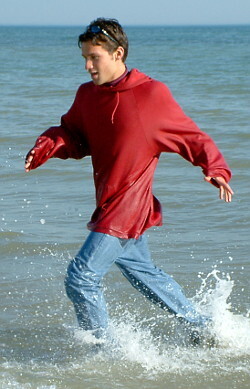
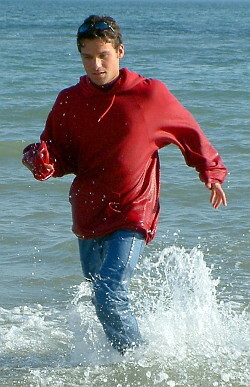
You'll be quite exhausted after this.
